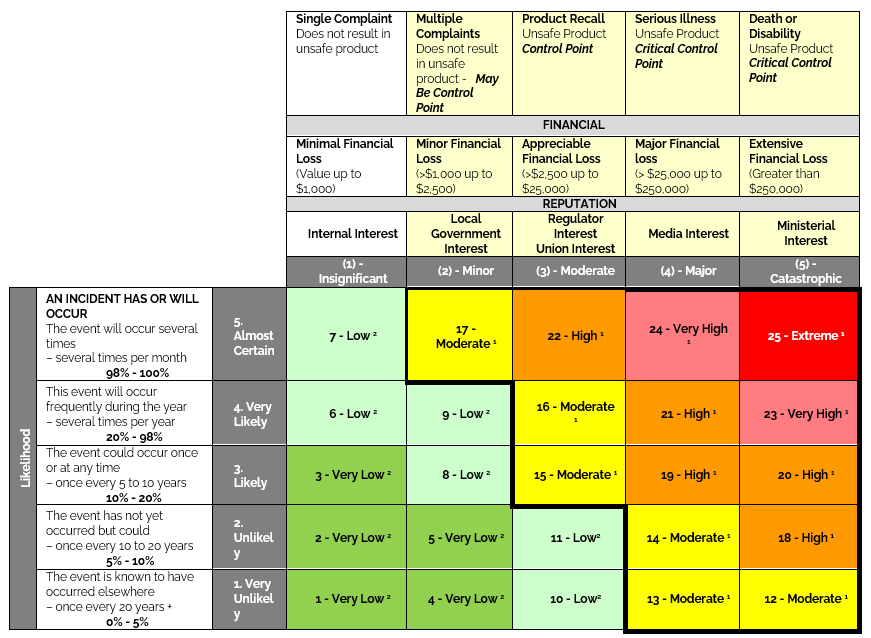Hazard management procedure
Purpose
This procedure outlines the requirements for the management of hazards and provides a standard model for hazard management.
This procedure is to be used in the identification, assessment, and control of hazards by all employees, apprentices, contractors, volunteers or visitors on all PEER Construction worksites.
Use of SWMS and a JSA
A SWMS (for high risk construction work activities) or JSA (for other activities), must be prepared, including consultation with relevant people for all tasks.
Prior to starting any activities, the SWMS or JSA must be reviewed and agreed to by all workers.
Process
The process has the following components.
Identify the hazards
Identifying how people could be harmed can be achieved by direct observation, for example, workplace inspections and walking through an area, consultation with workers, hazard reporting and reviewing accident and ill-health records.
To help identify potential hazards, you may ask the following questions:
- Can any body part get caught in or between objects?
- Do tools, machines, or equipment present any hazards?
- Can the worker make harmful contact with moving objects?
- Can the worker slip, trip, or fall?
- Can the worker suffer strain from lifting, pushing, or pulling?
- Is the worker exposed to extreme heat or cold?
- Is excessive noise or vibration a problem?
- Is there a danger from falling objects?
- Can weather conditions affect safety?
- Can contact be made with hot, toxic, or caustic substances?
All hazards identified in the course of work, should be reported to your manager.
Identify who might be harmed and how
Evaluate the risks and identify controls
Having identified the hazards, decide how to manage them.
Review your current practices; consider the controls you have in place and how the work is organised. Compare this with good practice principles and see if there is more you should be doing to meet these standards.
Apply the hierarchy of control:
- Elimination – can I remove the hazard altogether? If not, how can I control the risks so that harm is unlikely?
- Substitution – is there a less risky option such as using a less hazardous chemical.
- Isolation – involves physically separating the source of harm from people by distance or using barriers for example installing guard rails around exposed edges and holes in floors; using remote control systems to operate machinery; storing chemicals in a fume cabinet.
- Engineering – prevent access to the hazard such as by guarding, isolation, modifying plant and equipment and use of lifting equipment.
- Administration – training, development of standard operating procedures or rotating people through a job.
- PPE – issue personal protective equipment – clothing, footwear, goggles etc and provide welfare facilities such as first aid and washing facilities for removal of contamination.
Involve workers and health and safety representatives to assist you in the development of risk control measures. As the duty holder you must ensure that the controls are fit for purpose, suitable for the nature and duration of the work and are installed and set up correctly.
Risk assessment
A risk assessment is the process of determining the level of risk involved and the likelihood of injury, illness or death occurring. It is a formal safety process which identifies all the risks associated with an activity. Once identified, each risk is analysed on a couple of important dimensions, and then controls are put in place to mitigate or eliminate as many risks as possible – using the analysis to prioritise certain risks.
The likelihood that someone will be harmed can be estimated by considering:
- How often is the task done? Does this make the harm more or less likely?
- How often are people near the hazard? How close do people get to it?
- Has it ever happened before, either in your workplace or somewhere else? How often?
After you identify the likelihood that a particular risk will affect the work activity you are completing, you need to determine the magnitude of the consequences or effects that may result.
Determining if the risk is low to high on a scale comes from assessing the risk’s likelihood along with its significant effect.
To rate the likelihood of a business activity not being properly performed complete a risk assessment.
- Likelihood: is assessed on the assumption that there are no existing risk management and compliance processes in place.
- Consequence: rating the consequence of not properly performing the business activity quantifies damage in terms of financial loss to PEER Construction.
Assign the risk rating based on a combination of the risk rating using the tables below.


Hazard reporting
For hazard reporting, follow the Hazard reporting policy.
Work Health and Safety Act 2012 (SA)
Work Health and Safety Regulations 2012 (SA)
Environment Protection Act 1993
Hazard report form
JSA template
SWMS template
Hazard
A source or situation that has the potential to harm a person, the environment or damage property.
Plant
Defined in the Work Health and Safety Act 2012 (SA) plant includes:
- any machinery, equipment, appliance, container, implement and tool; and
- any component of any of those things; and
- anything fitted or connected to any of those things.
Risk
The probability (likelihood) of harm or damage occurring from exposure to a hazard, and the likely consequences of that harm or damage.
Risk assessment
The process of evaluating the probability and consequences of injury or illness arising from exposure to an identified hazard.
Risk control
The elimination or minimisation of risk associated with an identified hazard.
Risk register
A complete register of all the documentation that relates to an item/substance/task/event/activity e.g. hazard identification, risk assessments, safe operating procedures, safety plans.
Version 1.0 – Last updated 22/6/2022
